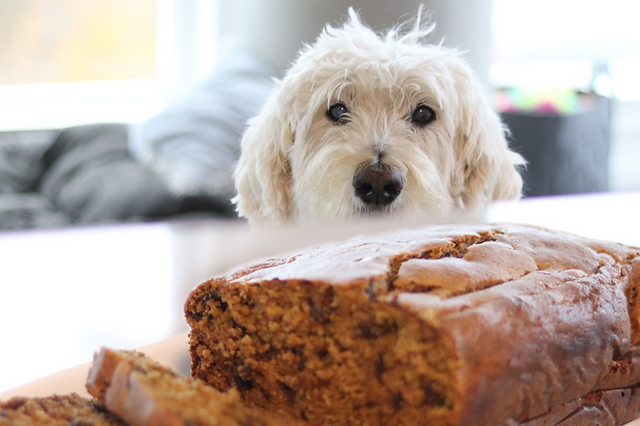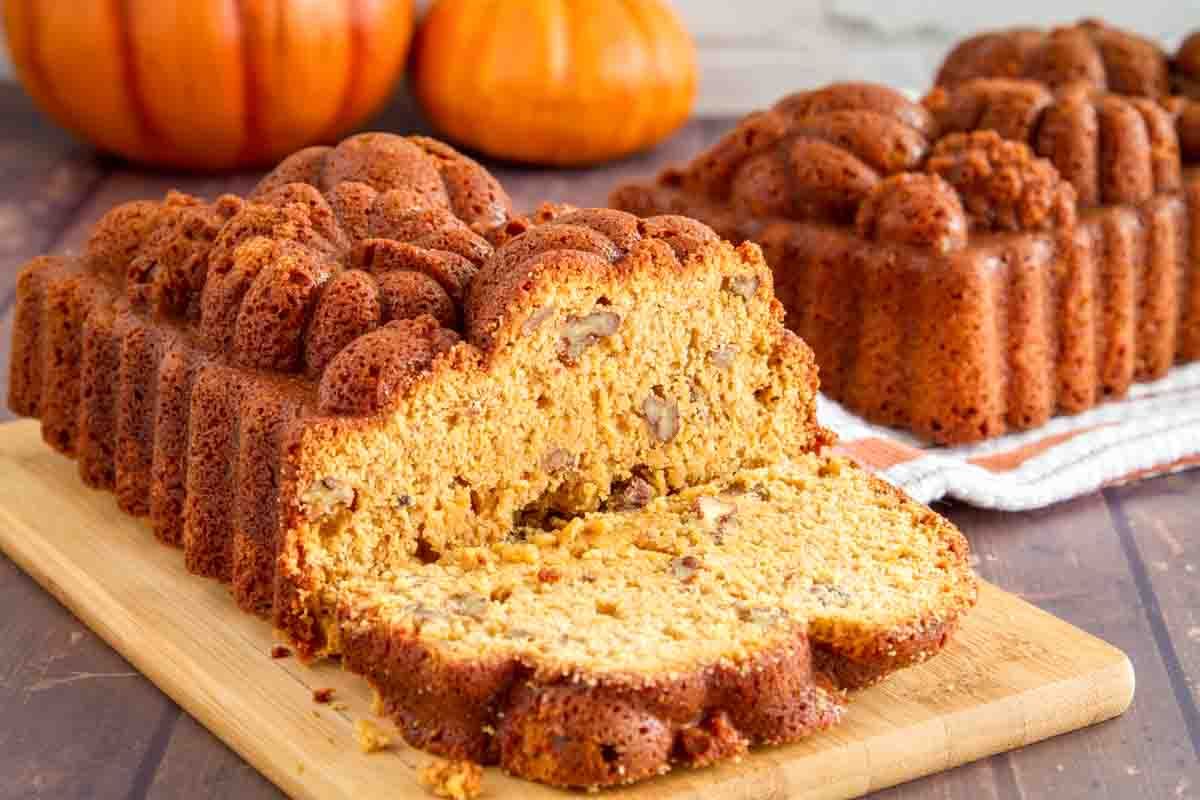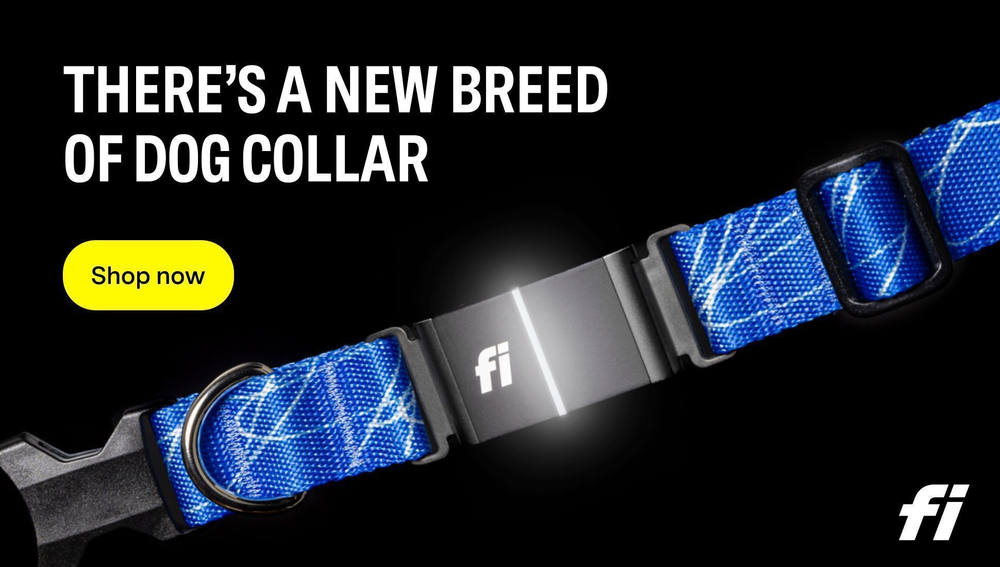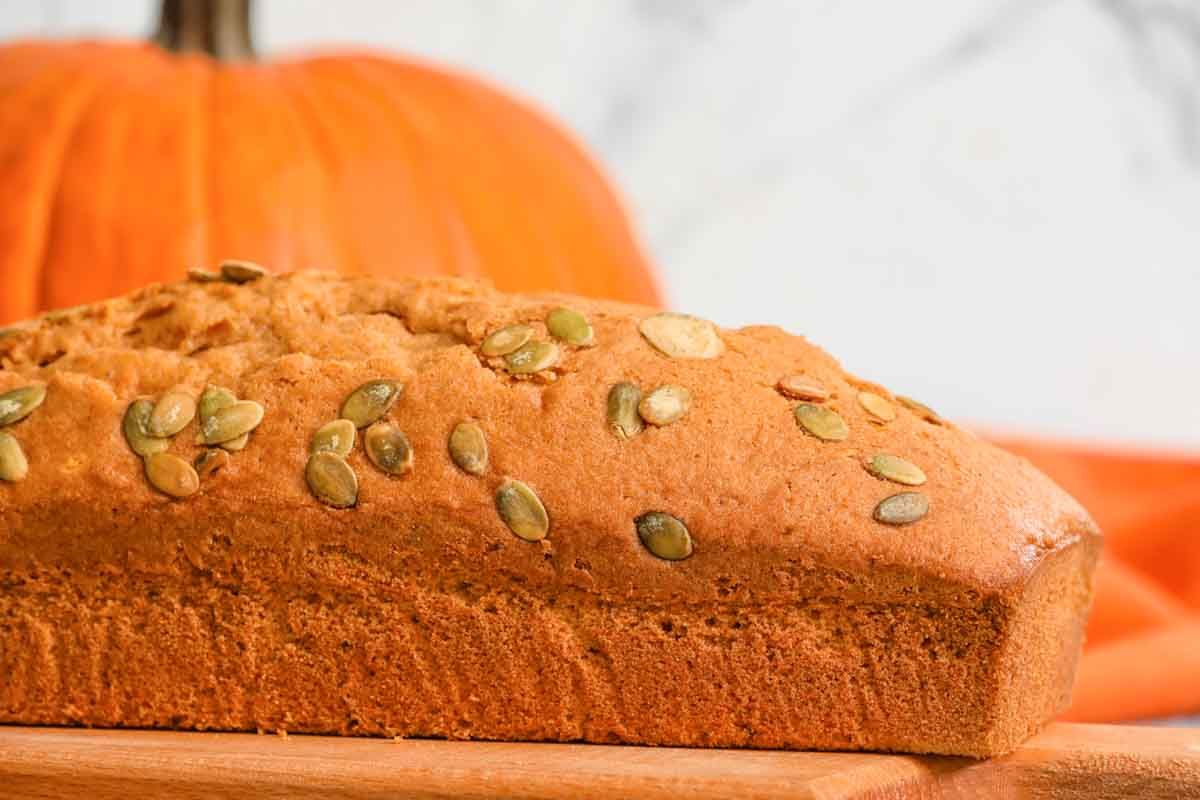Can our four-legged friends enjoy pumpkin bread? Let's find out!
Plain pumpkin is usually safe for dogs but the other ingredients found in pumpkin bread can be dangerous. Sugar, spices, and even chocolate can be toxic to dogs.

Moreover, the high fat content of many bread recipes can cause pancreatitis. Additionally, some recipes include raisins or nuts which are also harmful. Raisins can damage dogs' kidneys and certain nuts like macadamia nuts can be toxic.
All in all, it is best to avoid giving dogs pumpkin bread. Before adding any new dog food to their diet, always consult with your veterinarian.
Can Dogs Eat Pumpkin Bread?
To determine if dogs can safely consume pumpkin bread, explore the benefits of pumpkin for dogs and essential safety precautions. Discover the potential advantages that pumpkin can offer to your furry companion, while also ensuring their well-being by understanding the necessary safeguards.

Benefits of Pumpkin for Dogs
Pumpkin has lots of advantages for our furry buddies. Here are some of the benefits:
- It's a superb source of fiber. This helps digestion & can ease gastrointestinal issues.
- It's low in calories & full of vitamins like A, potassium & iron.
- It assists in regulating bowel movements - either hard stools or loose stools.
- Pumpkin seeds are filled with amino acids for healthy skin & a glossy coat.
Plus, pumpkin is great for weight control. Its low-calorie nature can fill you up without adding extra pounds. Also, the antioxidants in pumpkin benefit the immune system.
Tip: When introducing pumpkin to your pup's diet, start small & observe them. Ask your vet before drastically changing their diet.
Safety Precautions
Pumpkin bread is a tasty treat that many of us love. But, when it comes to sharing it with our furry friends, there are some safety guidelines to consider.
- Keep out harmful ingredients: Pumpkin is okay for dogs to eat, however ingredients like chocolate, raisins, and nuts can be damaging. So, make sure your pumpkin bread recipe has none of these before giving it to your pup.
- Monitor portion sizes: Small amounts only! Excessive amounts can lead to an upset stomach and weight gain.
- Check sugar content: Pumpkin bread often has added sugar, which can be harmful if eaten in large amounts. Opt for recipes that have minimal or no added sugar.
- Choose organic or homemade options: To keep your pup safe, use organic pumpkin puree or make homemade pumpkin bread specifically designed for dogs. This way, you can control the ingredients.
- Check for allergies: Before trying any new food, check for allergies or sensitivities. Start with a small amount and watch your pup's reaction.
- Consult your vet: If you have doubts, talk to your veterinarian. They can provide personalized advice based on your pup's needs and dietary restrictions.
Moreover, don't share leftovers that have been sitting out too long, they may be spoiled or contaminated with bacteria bad for dogs.
By following these safety precautions, you can give your furry friend a yummy treat like pumpkin bread while keeping them safe and healthy.
Recipe for Dog-Friendly Pumpkin Bread
To make dog-friendly pumpkin bread, use this recipe. This section covers the recipe for dog-friendly pumpkin bread, including the key ingredients and step-by-step instructions to follow.

Ingredients
This article section provides info on making tasty pumpkin bread that is safe and enjoyable for your furry companion. Here's a table of the key ingredients:
| Canned Pumpkin Puree | 1 cup |
| Oat Flour | 2 cups |
| Peanut Butter (Unsalted) | 3 tablespoons |
| Eggs | 2 large |
| Honey | 2 tablespoons |
The table shows the main ingredients only, not extras for taste or texture. Pumpkin, an ingredient in this recipe, has many benefits for dogs. The ASPCA says it aids digestion and provides diet fiber.
Step-by-step Instructions
To make dog-friendly pumpkin bread, follow these steps:
- Preheat your oven to 350°F (175°C) and grease a loaf pan with non-stick spray or butter.
- In a large mixing bowl, mix together 1⅔ cups of whole wheat flour, 1 teaspoon of baking soda, and ¼ teaspoon of baking powder.
- In a separate bowl, combine 1 cup of pumpkin puree, ½ cup of unsweetened applesauce, and 2 tablespoons of honey.
- Gradually add the wet ingredients to the dry ingredients, stirring until just combined. Don't overmix!
- Pour the batter into the pan and smooth the top with a spatula.
- Bake for 45-55 minutes or until a toothpick inserted into the center comes out clean.
For extra flavor, add shredded carrots or diced apples. These provide vitamins A and C, as well. If your happy dog has dietary restrictions or allergies, make substitutions. For example, if they're lactose intolerant, use mashed bananas instead of applesauce for moisture.
Let the bread cool completely before serving. Cut it into small pieces to avoid choking. With these tips, you can make your pup a delicious, dog-friendly pumpkin bread that will have them wagging their tail!
Alternatives to Pumpkin Bread for Dogs
To find alternatives to pumpkin bread for dogs, explore other pumpkin treats for dogs and discover additional safe and healthy dog treat options. Quickly introduce the sub-sections: other pumpkin treats for dogs, other safe and healthy dog treat options.

Other Pumpkin Treats for Dogs
Pumpkin bread may be a pup favorite, but there are other tasty and healthy pumpkin options! For example, raw pumpkin chunks, pumpkin puree, biscuits, yogurt, kong filling, and even smoothies! Plus, you can get creative and shape them into fun shapes like paw prints and bones. All these alternatives are packed with fiber, vitamin A, and antioxidants for your dog's digestive and immune health. Just remember to consult your vet before adding new treats or food to your pup's diet.
Other Safe and Healthy Dog Treat Options
Dog owners are always on the hunt for safe, healthy treats for their furry friends. Pumpkin bread may be a go-to, but there are plenty of other alternatives too! Carrot sticks promote dental health; blueberries are rich in antioxidants; sweet potatoes are full of vitamins; and coconut oil can give your pup a shiny coat and aid digestion. However, every pup is different, so make sure to talk to a vet before introducing any new treats!
Let us tell you a story about the power of alternative treats. Susan had a pup, Ziggy, who was having digestive issues. After consulting with her vet, she switched him to sweet potatoes. Suddenly, Ziggy's stomach problems faded away and he became happier than ever!
When it comes to choosing treats for your pup, remember to keep their individual needs in mind - and always consult with a professional for the best advice.
Conclusion
Can pooches eat pumpkin bread? You may be tempted to share this yummy treat with your furry mate, but it's important to consider the potential risks.

Pumpkin itself is generally safe for dogs and can even offer health benefits. But, pumpkin bread often contains ingredients that can be bad for dogs, like sugar, spices, and chocolate chips. These may cause digestive issues, pancreatitis, or even poisoning. So, it's best to avoid giving pumpkin bread to your pet.
If you want a safe way for your pup to enjoy fall, you can make homemade pumpkin treats tailored for dogs with simple ingredients like plain pumpkin puree and whole wheat flour. This way, you control the ingredients and guarantee they're safe for your furry friend.
Remember to talk to your vet before adding any new food to your dog's diet. They can provide personalized advice based on your pup's dietary needs and health conditions. Every dog is different, and what's safe for one may not be suitable for another.
Frequently Asked Questions
Q: Can dogs eat pumpkin bread?
A: It is generally safe for dogs to eat pumpkin bread in moderation. However, you should avoid giving them bread with added sugars, spices, or any ingredients that might be toxic to dogs.
Q: Is pumpkin bread good for dogs?
A: Pumpkin bread can provide some health benefits for dogs. Pumpkin is a good source of fiber and can aid in digestion. However, it should only be given as an occasional treat and not as a staple in their diet.
Q: Can pumpkin bread cause any health problems in dogs?
A: If your dog consumes pumpkin bread in large quantities or if the bread contains harmful ingredients like chocolate, raisins, or artificial sweeteners (such as xylitol), it can cause serious health problems. Always check the ingredients and avoid giving them excessive amounts.
Q: How much pumpkin bread can I give to my dog?
A: The amount of pumpkin bread you can give to your dog depends on its size and overall diet. It is best to offer a small piece as an occasional treat, and ensure that it is plain and free from harmful additives. Consult your vet for specific advice.
Q: Are there any alternatives to pumpkin bread for dogs?
A: Yes, there are alternatives to pumpkin bread that can be healthier for dogs. Plain cooked pumpkin or pumpkin puree (without any added ingredients) can be a safe and nutritious option. You can also explore other dog-friendly fruits and vegetables as treats.
Q: What should I do if my dog accidentally eats a large amount of pumpkin bread?
A: If your dog consumes a large amount of pumpkin bread or shows any signs of discomfort, such as vomiting, diarrhea, or unusual behavior, it is important to contact your veterinarian immediately for professional guidance.





